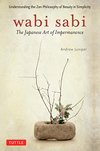Sublime
An inspiration engine for ideas
Rinzai Roku (a celebrated Zen text of the T’ang dynasty) and the teachings of Bankei, the seventeenth-century Japanese master who, for me, represents Zen at its best.
Alan Watts • In My Own Way: An Autobiography
Rikyu took the baton of artlessness from his predecessor, Ikkyu, when he introduced Korean craft pottery into his tea ceremony. The Korean potters, who might have made a hundred similar pots in a day, were probably totally devoid of any thought of artistic aspirations as they worked, and it was just this lack of intellect that proved so attractive
... See moreAndrew Juniper • Wabi Sabi: The Japanese Art of Impermanence
The rikka style, which means standing flower, was more sophisticated than the Buddhist offerings and more formal in its rules. There were seven branches symbolizing the peak, the hill, the waterfall, the town, the valley, the side receiving sunlight, and the side in the shade. It was built around the Buddhist cosmic view, and because of the
... See moreAndrew Juniper • Wabi Sabi: The Japanese Art of Impermanence
Rinzai’s radical use of buji tells us that Zen is no “thing” whatsoever. In his talk, he tries to cut off any notion we may have of what there is to do or what there is to accomplish. He spells out all the traps that his monks are likely to fall into—his way of flushing out their “secret practices.” Today, Rinzai is famous for answering questions
... See moreBarry Magid • Ending the Pursuit of Happiness: A Zen Guide
Basho wrote his haiku in the simplest type of Japanese speech, naturally avoiding literary and “highbrow” language, so creating a style which made it possible for ordinary people to be poets. Bankei, his contemporary, did just the same thing for Zen,
Alan W. Watts • The Way of Zen
